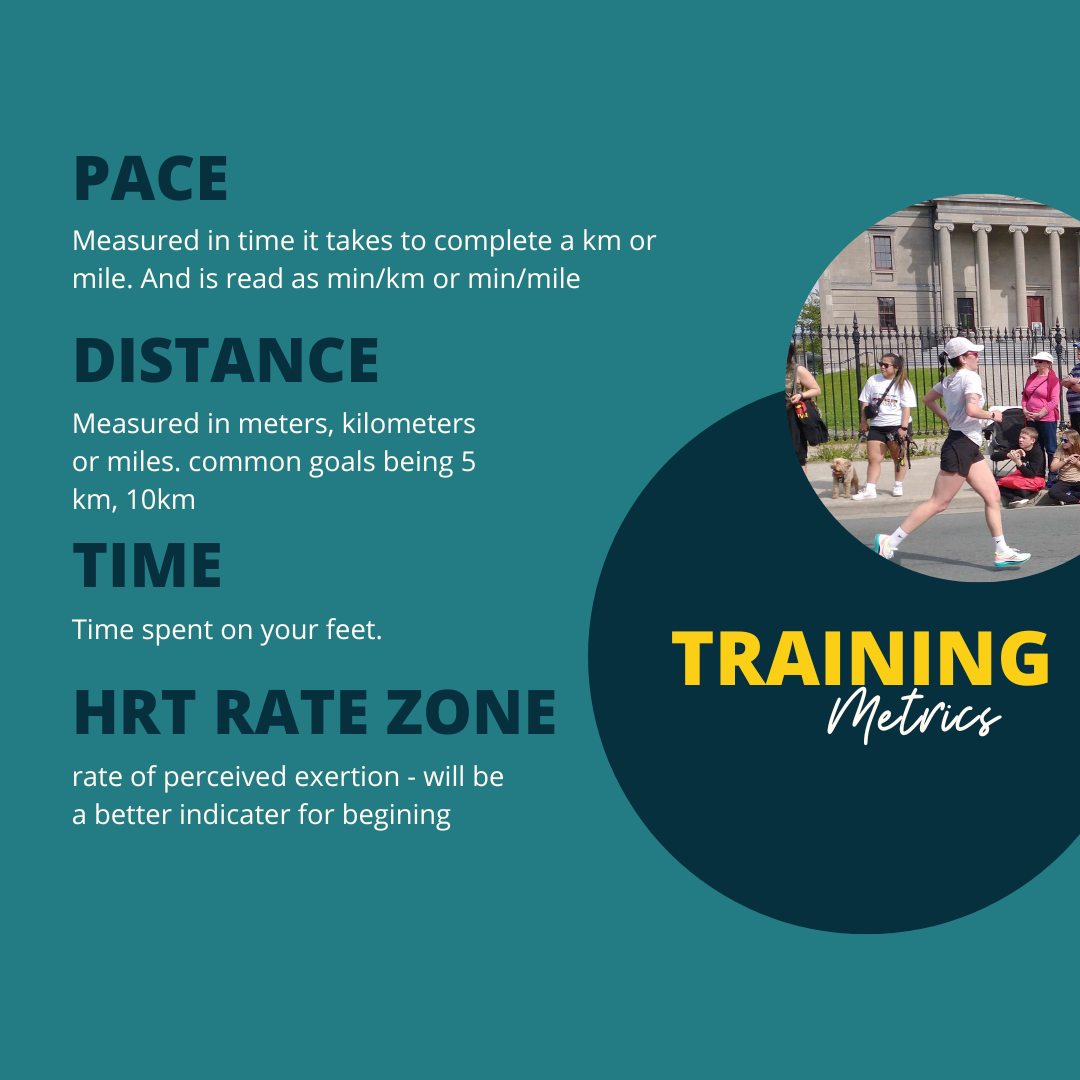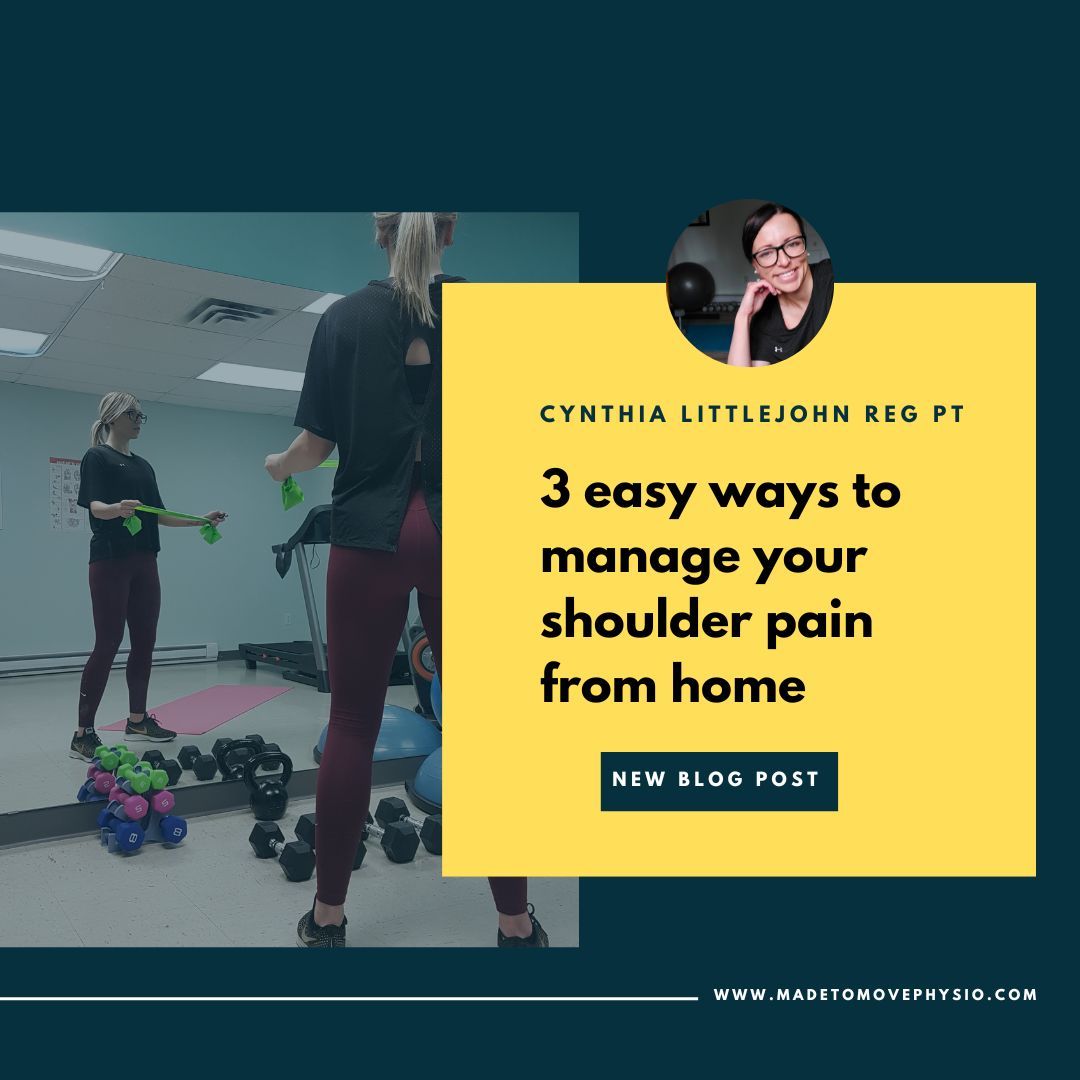Running: What I wish I knew before I started

So you want to become a runner!?! I have enjoyed running for years, and one of my favorite things to do is share my love for running with others. It can be intimidating to start something new, and if your not sure where to start, hopefully this information can help!
My goal is to introduce running to people that are interested in getting started in a way that promotes injury prevention and a sustainable approach.!
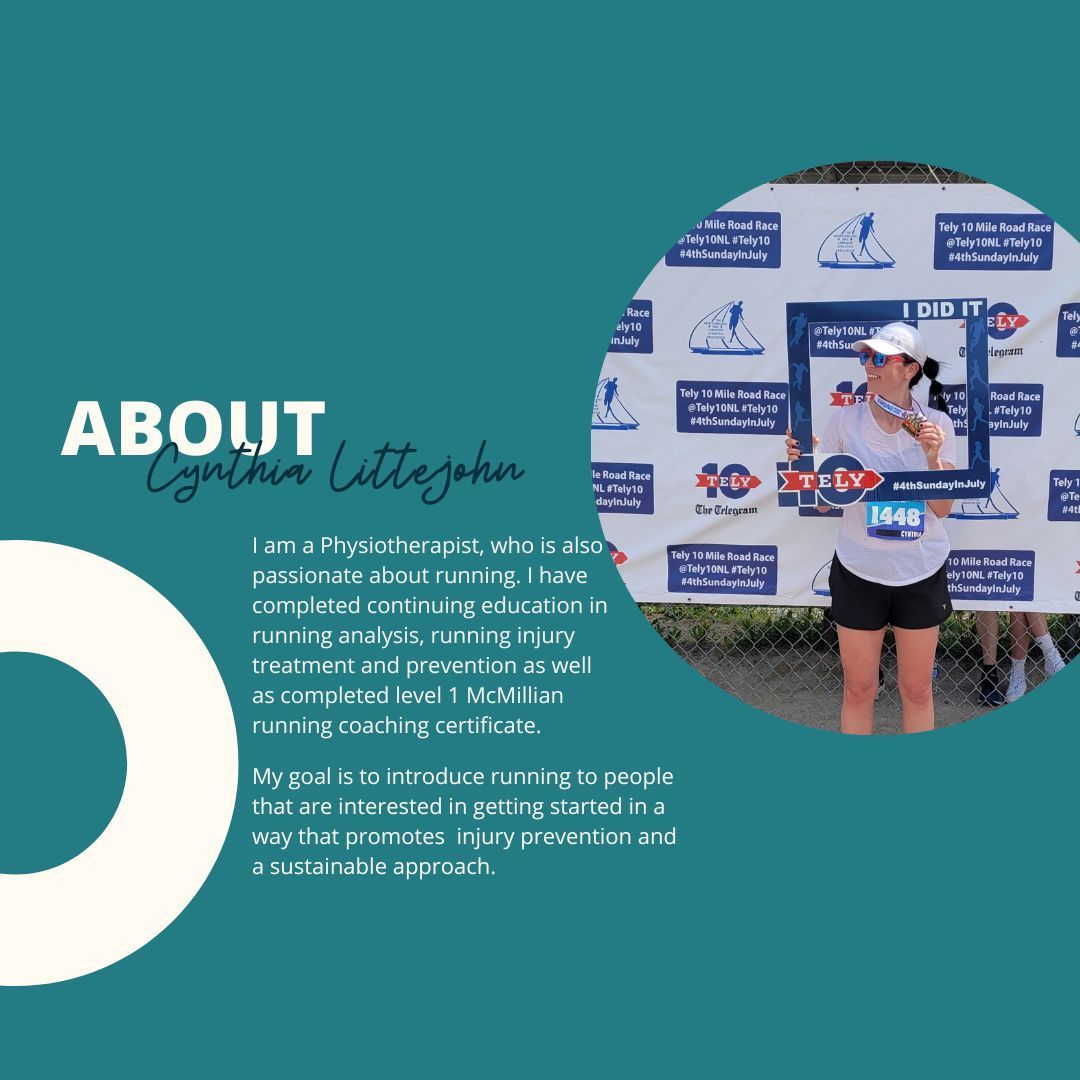
Lets talk running Metrics:
1. Pace
The time it takes to complete a kilometer or mile, and will be read as min/km or min/mile. As a beginner try not to concern yourself to much with your pace. You are learning a new skill and focusing on this metric is not important. What is cool is that you are out there running!! A better way to gauge your efforts starting out is your rate of perceived effort ( RPE) On a Scale of 1-10 what do you perceive your effort to be?? If each run you are on is a 8-9/10 it may be an indication you are going to fast. Our goal here is to build a base of comfortable running, allowing our body to adapt to new stressors and avoid injury.
2. Distance
Measured in kilometers (km) or miles (m) , a lot of runners will set goals around distances such as reaching a 5k, 10k or half marathon or marathon distance. If you are a beginner and are feeling like sustaining running for these longer distances seems impossible!! Instead of focusing on distance focus on time. After a warm up, focus on sustaining steady running for 10 mins, and increase by 2 min increments. Setting smaller goals will allow you to accomplish them easier, and before long you will be reaching those longer distances that once seemed impossible.
3. Time
This is pretty obvious , most of us are tracking our runs with smart devices and will let you know how long you have been out there running. As mentioned above, starting out try to tackle smaller increments of time at a lower RPE and build from there
Running Form
Running form is very individual for each runner and you do not need to have the same form as someone else to be able to run. However there are some things you can think about to avoid injury and be as efficient as you can be while running.
Cadence - If you "google" ideal cadence you will likely see a 170-180 cadence recommendation. This will very from runner to runner. In my experience I do not get to concerned with cadence unless it is very low. Low cadence can have a correlation with over striding and heel striking, and often improving your cadence can help avoid this! Over striding and heel striking can leave you more prone to injuries as it is harder on your joints to absorb the forces of running.
Foot Strike - where you land on your foot when you are running can have implications for risk of injury, heel striking is not ideal as you are placing increased forces on your joints at it creates a "breaking" momentum and is not efficient use of energy. Where your foot strikes in relation to your body is also important, we would prefer to see you land with your foot under your body, and not out stretched or reaching forward- also called "over striding"
Cross over - Each of your feet should have their own lane, and not cross into the other foots lane. This can be an indicator of a glut/ hip weakness and can on times lead to ITB syndrome.
Efficiency- When running we want to be efficient as possible and not wasting energy where possible. Some cues to think of while running; "run tall" as if there was a string attached to your head pulling you toward the ceiling, make sure your pelvic bones are facing forwards and not downwards, allowing each foot to have its own lane, and landing under your body, with a small arm swing that does not cross the mid line of your body.
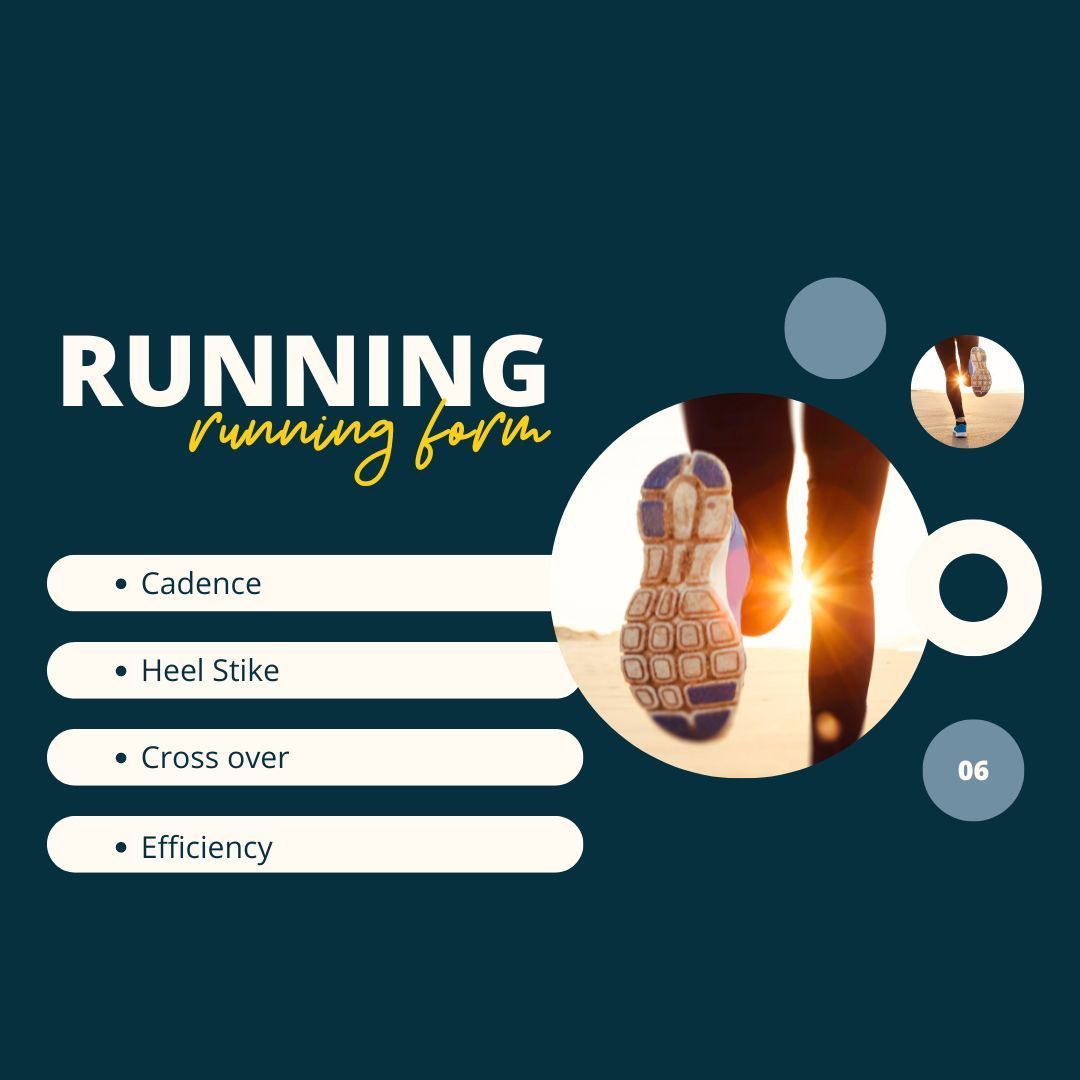
The Notable Steps
The PREHAB- the things you do to avoid injury and need for rehab
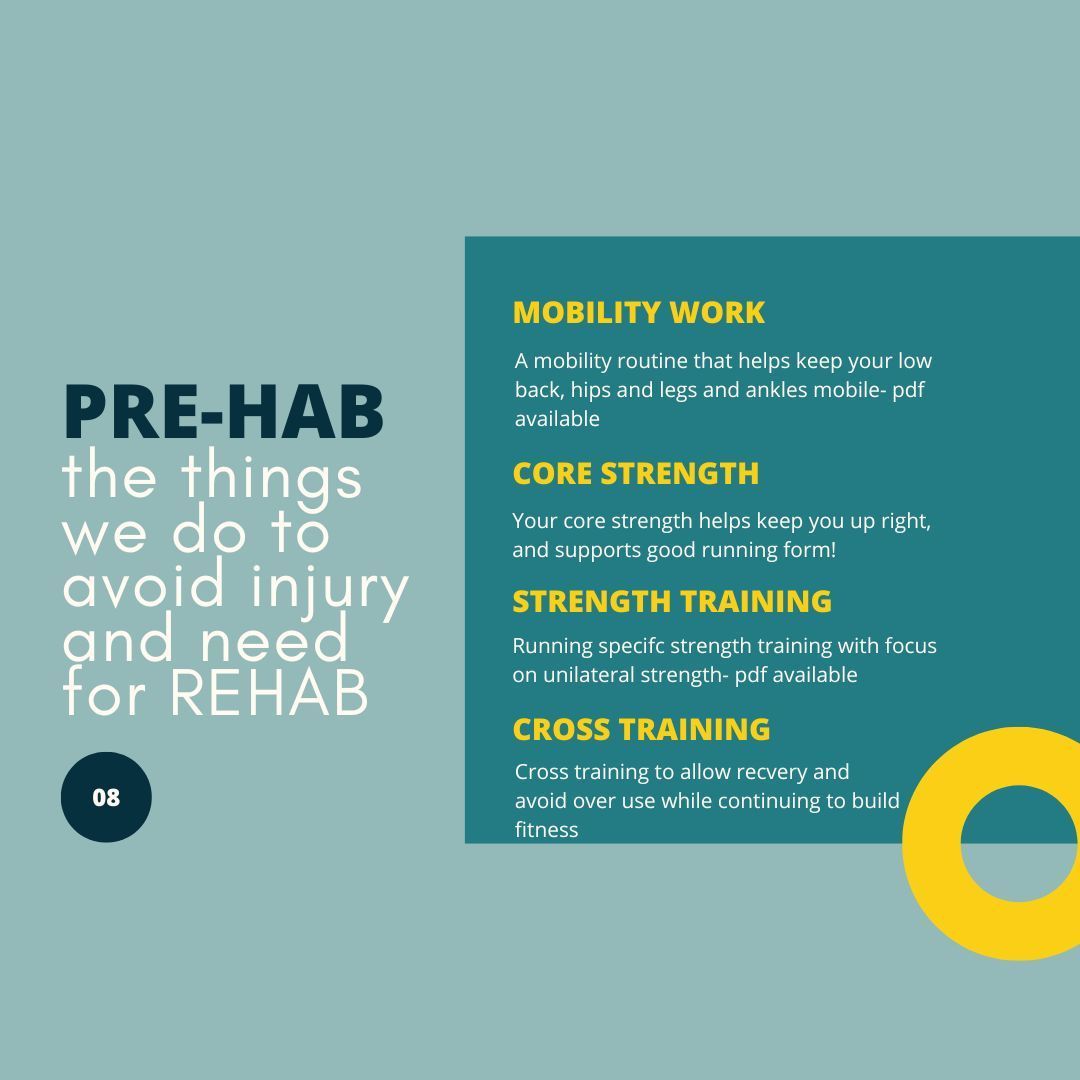
WARM-UP- Preparing your tissues for the activity ahead
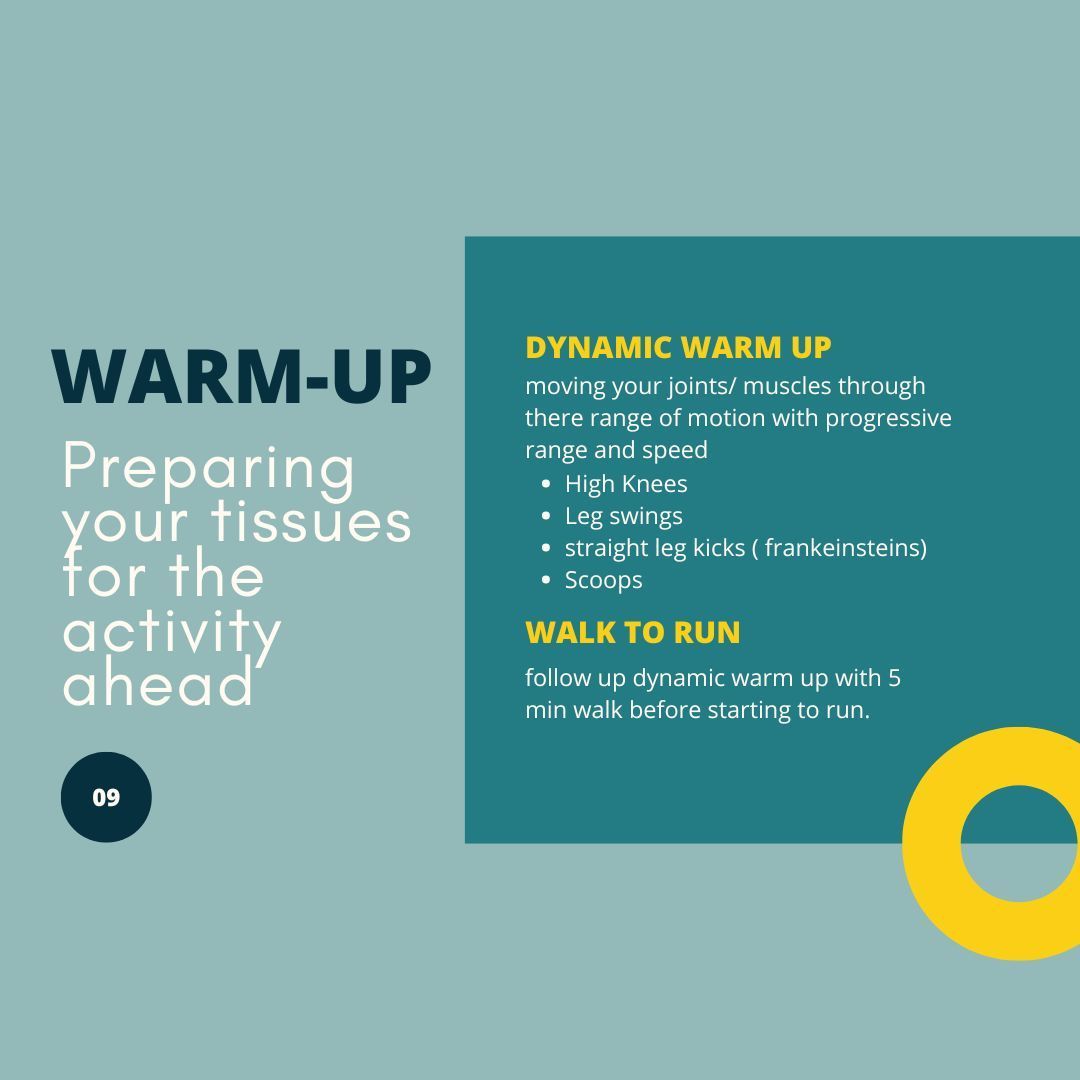
THE RUN- Know the goal of the run, ENJOY IT!!!
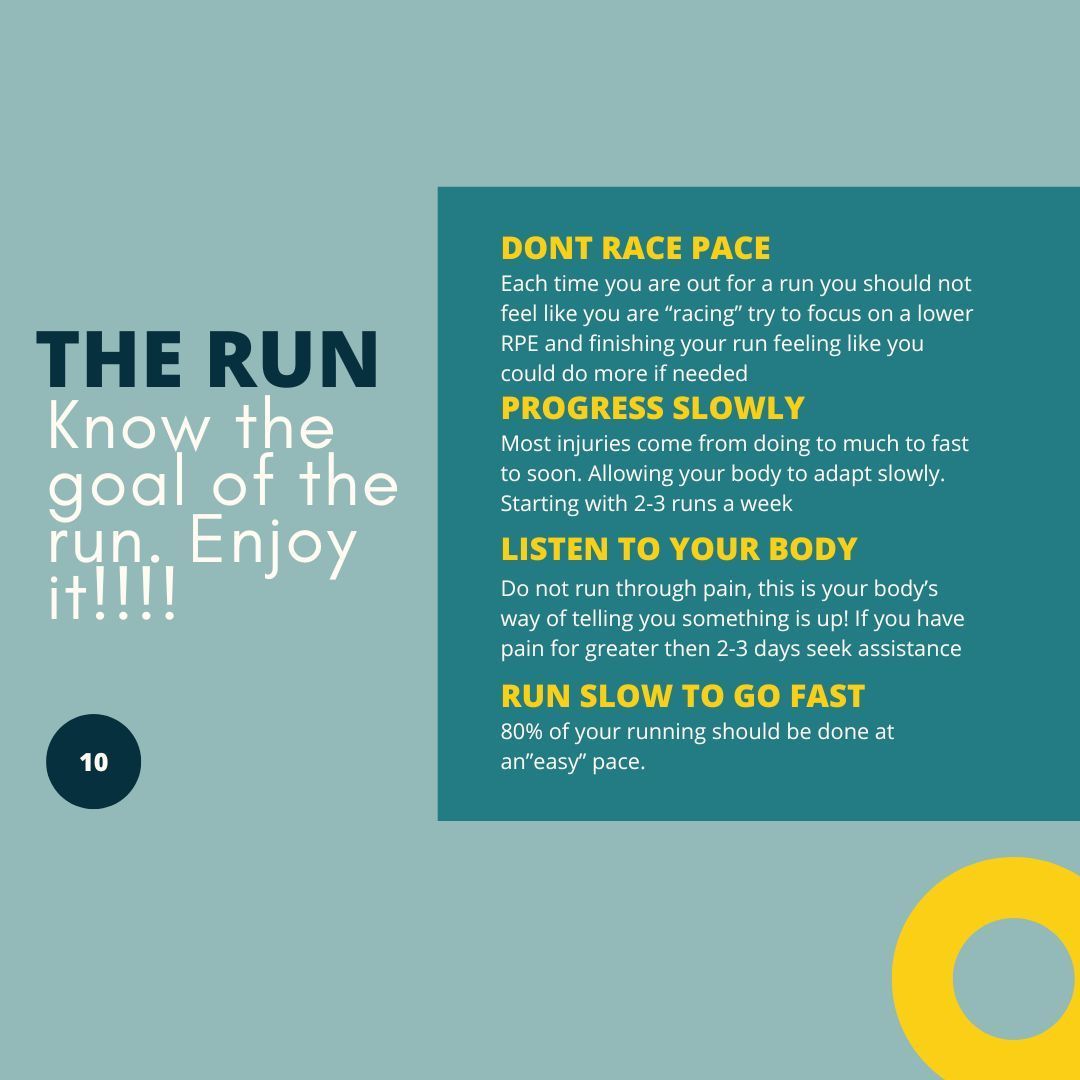
RECOVERY- Progress is built on recovery days!!!
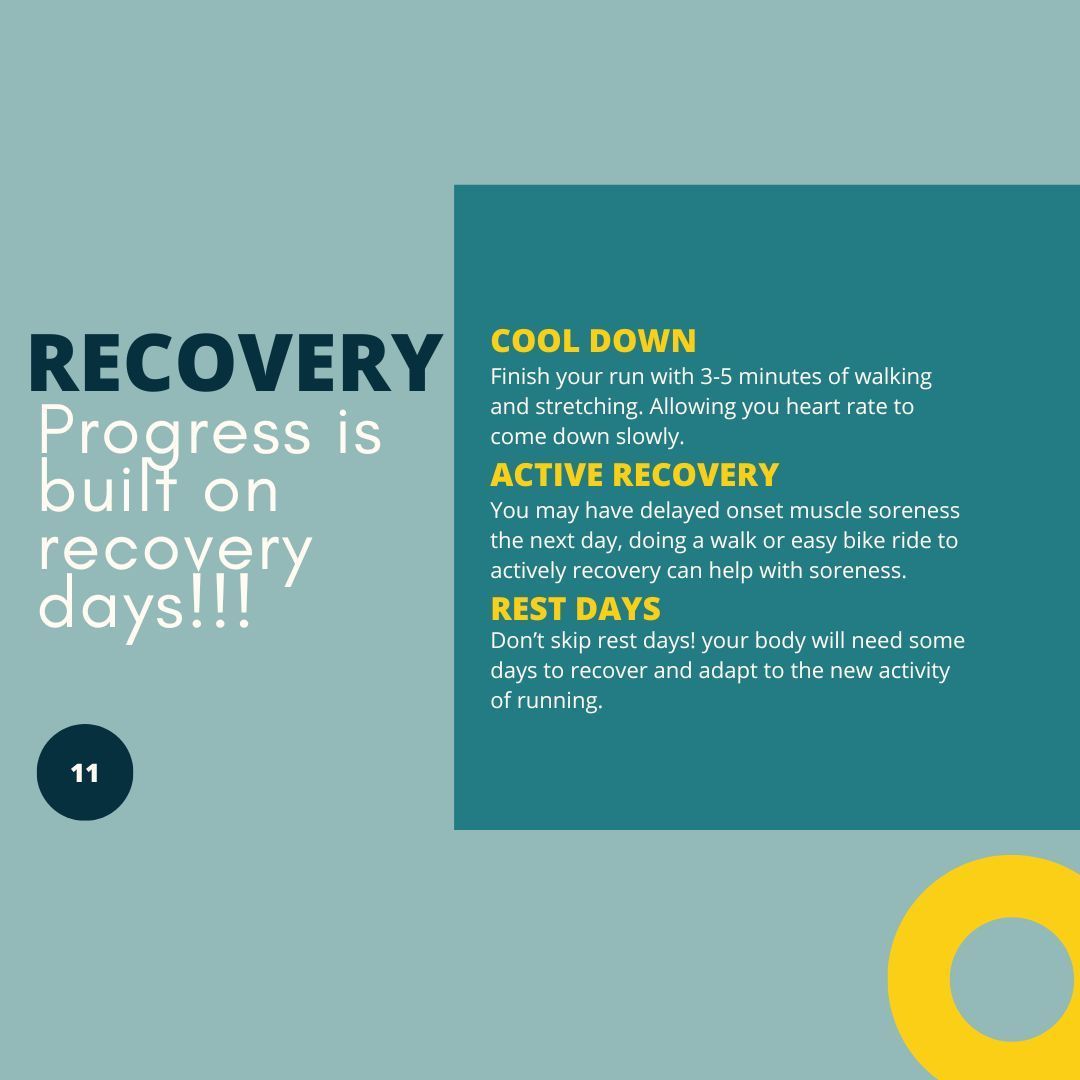
We are here to help! If you are interested in starting to run and want to have a guide on the prehab and mobility routines to get you started reach out!! Both or our Physiotherapist are experienced runners and here to get you moving, injury free!

Cynthia graduated from Memorial University in 2006 with a Bachelor's degree in Kinesiology (co-op) honors; where she was a member of the women's varsity volleyball team. She went on to complete her Masters in Science of Physiotherapy at McMaster University graduating in 2008.Cynthia has been working in private practice since that time. She has a strong interest in manual therapy and is a fully certified Level 3 Manual and Manipulative Physiotherapist with the Canadian Orthopaedic Division. Other areas of continuing education include acupuncture, dry needling, advanced hip assessment and treatment, soft tissue release, athletic and postural taping, mulligan techniques, shoulder assessment and treatment as well as running analysis and running injury treatment and prevention.

